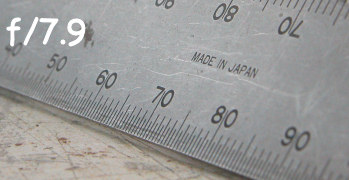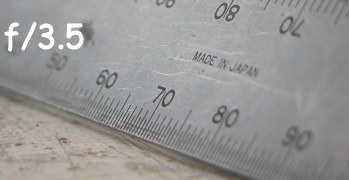Using the aperture
The average digital camera has a very limited range of apertures often just f/2.8 through to f/8, although some have f/2 and others close down to f/11 or f/16.
A further restriction is when you use the zoom the lens closes down to perhaps f/5.6. This is a compromise so that the lens can be smaller than say an f/2.8 'constant' telephoto. Constant maximum aperture throughout it's zoom.
The Panasonic Fz20 achieved a x12 zoom with a 'constant' aperture of f/2.8 with a front element of around 45mm diameter. Subsequent Fz30 only has a front element of about 37mm and so looses aperture as you zoom out to f/3.3 ... not much, unlike similar long zoom cameras which loose aperture to f/5.6 at full telephoto.
"f/" = Focal length divided by diameter of aperture
The f/stop number is the result of a mathematical equation.
Diameter of the aperture divided into the focal length of the lens.
The 'circle of confusion'. An image is only truely sharp at the distance the lens is focused upon. But the eye accepts as sharp a given circle of fuzziness as sharp. How big this is depends on the degree of magnification. This area of 'sharp' fuzziness extends closer and behind the distance focused on and is called Depth of Field.
The smaller the aperture, which is expressed as a larger f/number, the narrower the angle of the light hitting the sensor. The narrower angle the greater the difference permissible of focus and resultant increase of depth of field.
From these two photographs taken at f/3.5 and f/7.9 with a Nikon 5700 in mid-zoom macro mode [ 88mm equiv-alent, 22.3mm actual focal length], you can see how little depth of field you have when you come close. Focal length is 22.3mm or 88mm equivalent.
Taken using A for Aperture priority mode so I could select the aperture.
It doesn't matter what focal length you use for big close-ups the depth of field remains pretty much the same. But of course the perspective changes accord-ing to the distance of the camera to the subject. A supporting argument for using CU lens so you can use the zoom to get tight framing instead of having the front element of the lens very close to the subject.


To be expanded on .......
HOME .....My Photo Page